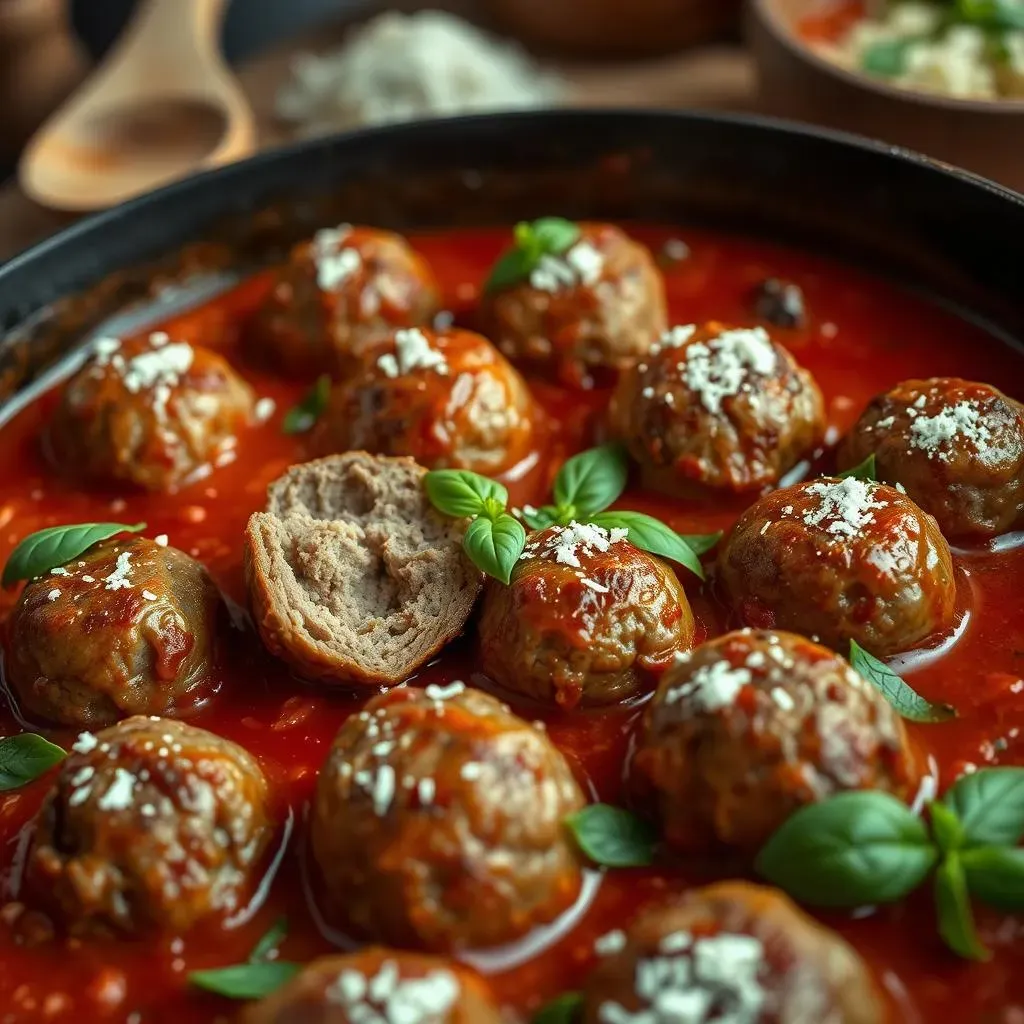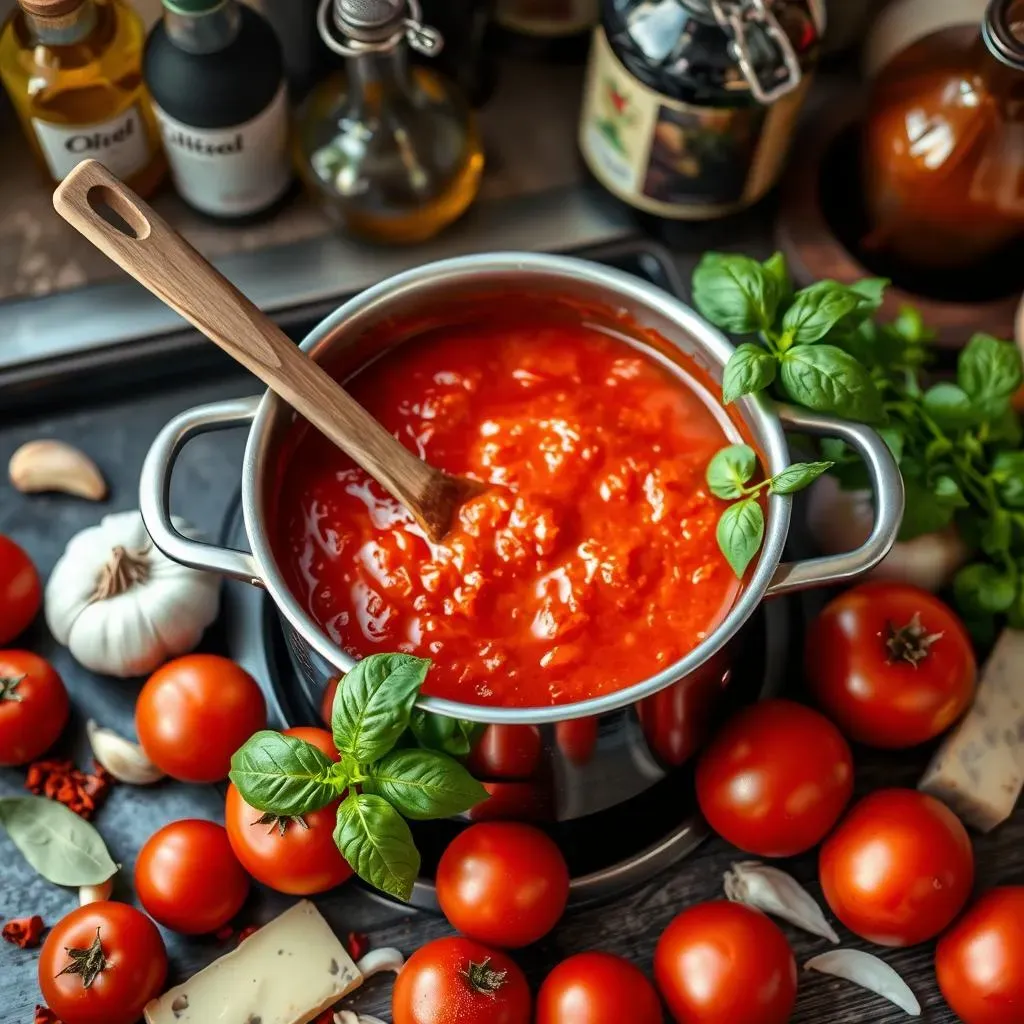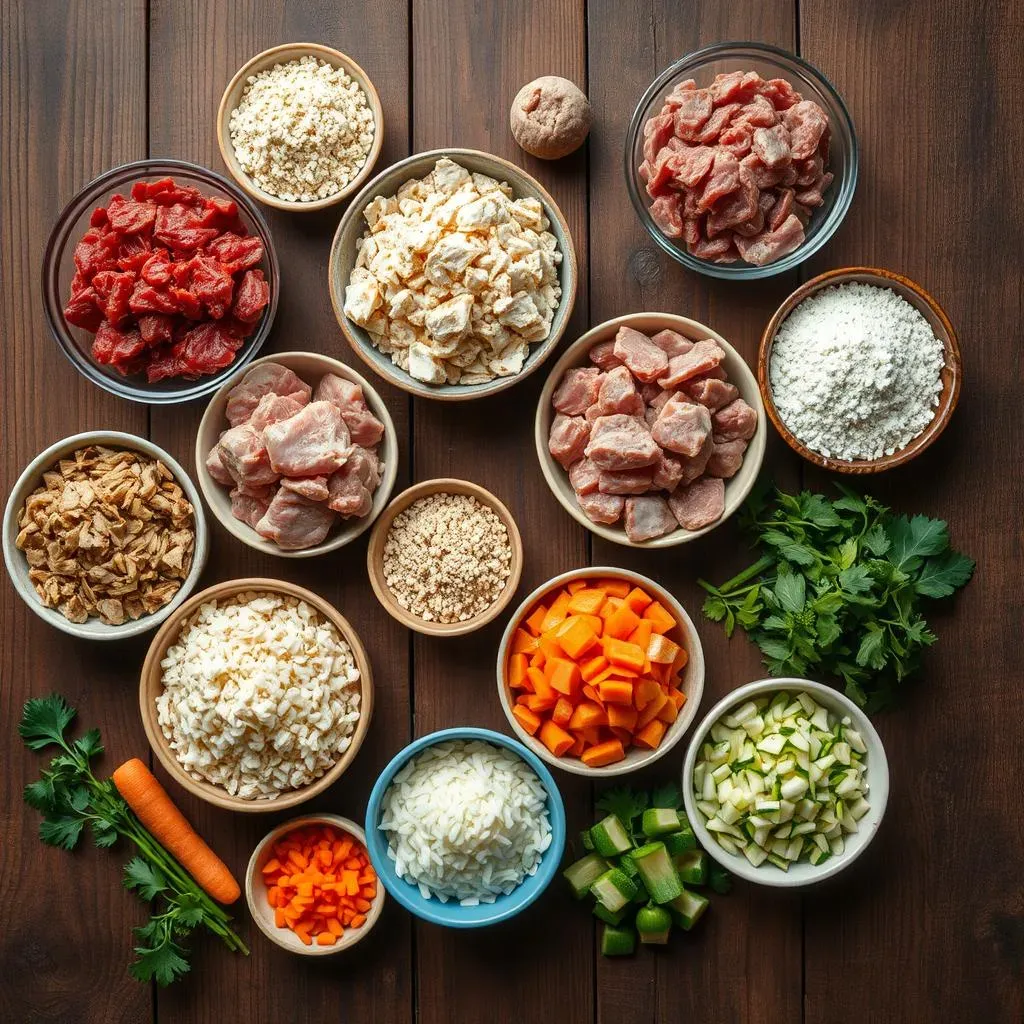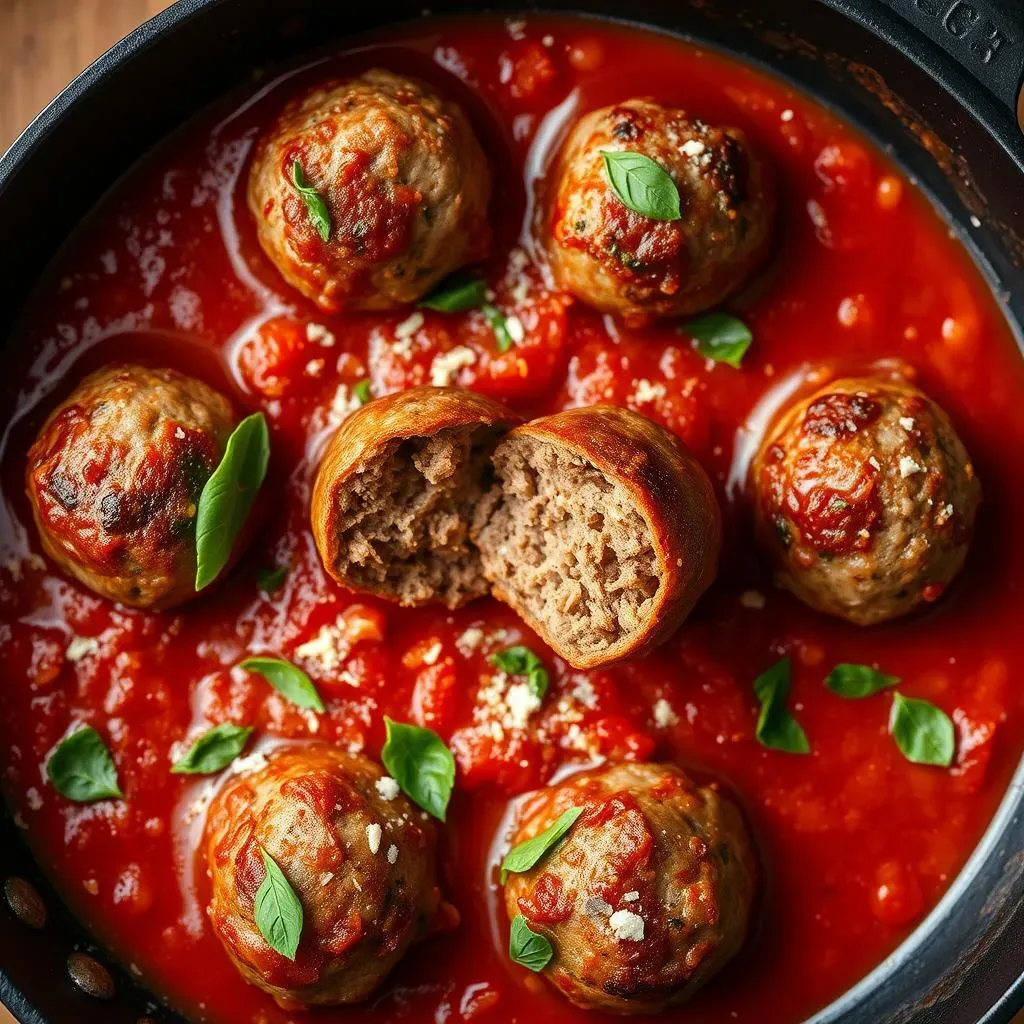Who doesn't love a plate piled high with spaghetti and perfectly seasoned italian homemade meatballs? This isn't just a recipe; it's a journey back to Sunday dinners, to the aroma of simmering sauce, and to the simple joy of sharing a delicious meal with loved ones. Forget those dry, bland meatballs you might have had before. We're diving deep into creating meatballs that are unbelievably tender, bursting with flavor, and guaranteed to be the star of any meal. In this guide, we'll walk you through every step, from selecting the best ingredients to mastering the art of the simmer. We'll explore variations, offer pro tips for achieving that perfect texture, and even suggest some mouthwatering pairings to elevate your meatball experience. Whether you're a seasoned cook or just starting out, get ready to unlock the secrets to crafting italian homemade meatballs that will have everyone asking for seconds. So, roll up your sleeves, gather your ingredients, and let's get cooking!
Perfecting Your Italian Homemade Meatballs: A StepbyStep Guide

Perfecting Your Italian Homemade Meatballs: A StepbyStep Guide
Alright, let's get down to brass tacks. Making truly great italian homemade meatballs isn't rocket science, but it does require a little attention to detail. First, you've gotta choose your ground meat. I'm a fan of a mix – usually about half ground beef (80/20 blend for flavor) and half ground pork. The pork adds a richness that beef alone just can't match. But hey, if you're a purist or have dietary restrictions, all beef or even ground turkey can work. Just adjust the seasonings accordingly. Once you've got your meat, it's all about layering in those flavors and getting the texture just right.
Now, before you even think about mixing everything together, there's a crucial step that many people skip: soaking your breadcrumbs. Don't just toss dry breadcrumbs into the mix! They'll suck up all the moisture and leave you with dry, crumbly meatballs. Instead, soak them in milk or even some of your tomato sauce for a few minutes until they're nice and saturated. This will help keep your meatballs moist and tender. Trust me, it makes a world of difference.
Step | Description | Why It Matters |
|---|---|---|
1. Meat Selection | Blend of ground beef and pork (or substitute) | Flavor and texture base |
2. Breadcrumb Soak | Soak breadcrumbs in milk or sauce | Ensures moisture retention |
The Secret's in the Sauce: Crafting the Ideal Tomato Sauce for Your Italian Meatballs

The Secret's in the Sauce: Crafting the Ideal Tomato Sauce for Your Italian Meatballs
The Foundation: Choosing Your Tomatoes
Let's talk sauce, because what's a meatball without a killer sauce? You could grab a jar off the shelf, but trust me, the difference between store-bought and homemade is night and day. The key is starting with quality tomatoes. I'm a huge fan of San Marzano tomatoes – they're a bit pricier, but their sweetness and low acidity are worth every penny. Crushed tomatoes are my go-to for a rustic, chunky sauce, but you can also use tomato puree for a smoother texture. Experiment and see what you prefer!
Now, before you even open that can of tomatoes, let's talk about building flavor. Don't just dump the tomatoes in a pot and call it a day. You need to create a flavorful base that will complement the meatballs perfectly.
- San Marzano Tomatoes: Sweet and low acidity
- Crushed Tomatoes: Rustic, chunky sauce
- Tomato Puree: Smooth texture
Building the Flavor Base: Aromatics and Herbs
Start by sautéing some finely chopped onions and garlic in olive oil until they're softened and fragrant. Don't rush this step – you want to coax out all those delicious flavors. Then, add a pinch of red pepper flakes for a little kick, and a generous pinch of dried oregano and basil. If you have fresh herbs on hand, even better! Just add them towards the end of cooking to preserve their flavor. A bay leaf or two thrown in also adds a subtle depth.
Also, don't be afraid to experiment with other aromatics! Some people like to add a carrot or celery stalk to the sauce for extra sweetness and complexity. It's all about finding what you like best.
Ingredient | Purpose |
|---|---|
Onion & Garlic | Aromatic base |
Red Pepper Flakes | Adds a touch of heat |
Oregano & Basil | Classic Italian flavor |
Bay Leaf | Subtle depth |
Simmering to Perfection: Low and Slow
Once your aromatics are cooked, it's time to add the tomatoes. Pour them into the pot, stir well, and bring the sauce to a simmer. Then, reduce the heat to low, cover the pot, and let it simmer for at least an hour, or even longer if you have the time. The longer it simmers, the more the flavors will meld together and the sauce will thicken. Be sure to stir occasionally to prevent sticking.
And here's a pro tip: add a Parmesan cheese rind to the sauce while it simmers. It adds a salty, umami flavor that's absolutely divine. Just be sure to remove it before serving!
Italian Homemade Meatballs: Ingredients, Variations, and Substitutions

Italian Homemade Meatballs: Ingredients, Variations, and Substitutions
The Meat of the Matter: Choosing Your Protein
Alright, so we already touched on the classic beef and pork combo, but let's dive deeper into the world of meatball possibilities! Ground beef is a staple for a reason – it's got that familiar flavor and holds its shape well. But don't be afraid to experiment! Ground turkey is a leaner option that still delivers great taste, especially when seasoned properly. Ground chicken can be a bit more delicate, so handle it with care. And if you're feeling adventurous, lamb can add a unique, slightly gamey flavor that's absolutely delicious.
Also, consider the grind of your meat. A coarser grind will give your meatballs a heartier texture, while a finer grind will result in a smoother, more delicate meatball. It's all about personal preference!
Meat Type | Flavor Profile | Texture |
|---|---|---|
Ground Beef | Classic, rich | Firm, holds shape |
Ground Pork | Rich, savory | Tender, adds moisture |
Ground Turkey | Lean, mild | Softer, requires binding |
Ground Chicken | Delicate, mild | Very soft, handle with care |
Ground Lamb | Gamey, robust | Hearty, unique |
Beyond Breadcrumbs: Binders and Fillers
Breadcrumbs are the classic binder, but there's a whole world of options out there! Panko breadcrumbs add a lovely crispy texture, while Italian-style breadcrumbs are pre-seasoned for extra flavor. But if you're gluten-free, don't despair! Gluten-free breadcrumbs, almond flour, or even cooked rice can work beautifully. The key is to find something that will absorb moisture and help the meatballs hold their shape.
And don't forget about fillers! Grated Parmesan cheese is a must for that classic Italian flavor. But you can also add finely chopped vegetables like onions, carrots, or zucchini for extra moisture and nutrients. Just be sure to squeeze out any excess liquid before adding them to the mix.
- Panko Breadcrumbs: Crispy texture
- Italian-Style Breadcrumbs: Pre-seasoned
- Gluten-Free Breadcrumbs/Almond Flour/Cooked Rice: Gluten-free options
- Grated Parmesan Cheese: Classic flavor
- Finely Chopped Vegetables: Moisture and nutrients
Tips and Tricks for Achieving Tender and Juicy Italian Homemade Meatballs

Tips and Tricks for Achieving Tender and Juicy Italian Homemade Meatballs
Alright, let's talk secrets! Achieving that perfect, melt-in-your-mouth meatball texture is all about a few key techniques. First, don't overmix the meat mixture! Overworking the meat develops the gluten, resulting in tough, dense meatballs. Mix just until everything is combined, then gently form the meatballs. I like to use a cookie scoop to ensure they're all the same size, which helps them cook evenly. Another key tip: don't pack the meatballs too tightly. You want them to be light and airy, not dense and compact. Think clouds, not rocks!
Now, here's a trick my grandma taught me: chill the meatballs before cooking them. This helps them hold their shape and prevents them from falling apart in the sauce. Just pop them in the fridge for about 30 minutes before browning or simmering. Trust me, it makes a difference! And speaking of browning, don't skip this step! Searing the meatballs in a hot pan creates a beautiful crust and adds tons of flavor. Just be sure not to overcrowd the pan, or they'll steam instead of brown.
Tip | Explanation |
|---|---|
Don't Overmix | Prevents tough meatballs |
Gentle Forming | Maintain light, airy texture |
Chill Before Cooking | Helps hold shape |
Sear for Flavor | Creates crust and adds depth |
Serving Suggestions: Pairing Your Italian Homemade Meatballs for a Complete Meal

Serving Suggestions: Pairing Your Italian Homemade Meatballs for a Complete Meal
Classic Combinations: Spaghetti and Beyond
let's be real, spaghetti and meatballs is a classic for a reason! But don't limit yourself. Meatballs are incredibly versatile and can be paired with so much more than just spaghetti. Think about other pasta shapes like penne, rigatoni, or even orzo. Each shape offers a different texture and way to soak up that delicious sauce. And don't forget about polenta! Creamy polenta topped with meatballs and sauce is a hearty and satisfying meal.
Also, consider adding some vegetables to your pasta or polenta. Roasted bell peppers, zucchini, or eggplant would all be delicious additions. It's a great way to sneak in some extra nutrients and add some color to your plate.
Pairing | Description | Why It Works |
|---|---|---|
Spaghetti | Classic long pasta | Perfectly twirlable, soaks up sauce |
Penne/Rigatoni | Tube-shaped pasta | Holds chunks of meatball and sauce |
Orzo | Rice-shaped pasta | Creates a risotto-like texture |
Polenta | Creamy cornmeal | Hearty and comforting base |
Thinking Outside the Pasta Box: Creative Pairings
Ready to get a little more adventurous? How about meatball subs? Load up a crusty roll with meatballs, sauce, and mozzarella cheese, then bake it until bubbly and golden brown. Or try making meatball sliders for a party appetizer. Serve them on mini brioche buns with a dollop of pesto mayo. And for a lighter option, try serving your meatballs over a bed of quinoa or couscous with a sprinkle of fresh parsley and a drizzle of olive oil.
Also, don't be afraid to experiment with different cuisines! Meatballs can be adapted to fit a variety of flavor profiles. Try adding some Asian-inspired spices and serving them with rice noodles and a peanut sauce, or making Greek-style meatballs with feta cheese and oregano and serving them with pita bread and tzatziki sauce.
- Meatball Subs: Crusty roll, mozzarella, baked to perfection
- Meatball Sliders: Mini brioche buns, pesto mayo
- Quinoa/Couscous Bowls: Lighter option, fresh herbs, olive oil
The Enduring Appeal of Italian Homemade Meatballs
From our kitchens to yours, the journey of creating the perfect Italian homemade meatballs is one filled with tradition, flavor, and a whole lot of love. We’ve explored the nuances of ingredient selection, the secrets to achieving that coveted tender texture, and the art of simmering in a rich, flavorful sauce. But the true magic of this dish lies not just in the recipe itself, but in the memories it creates and the joy it brings to those who gather around the table. So, go forth, experiment with your own variations, and continue the legacy of sharing delicious, homemade meatballs with the people you cherish. After all, some dishes are simply timeless, and Italian homemade meatballs are undoubtedly one of them.